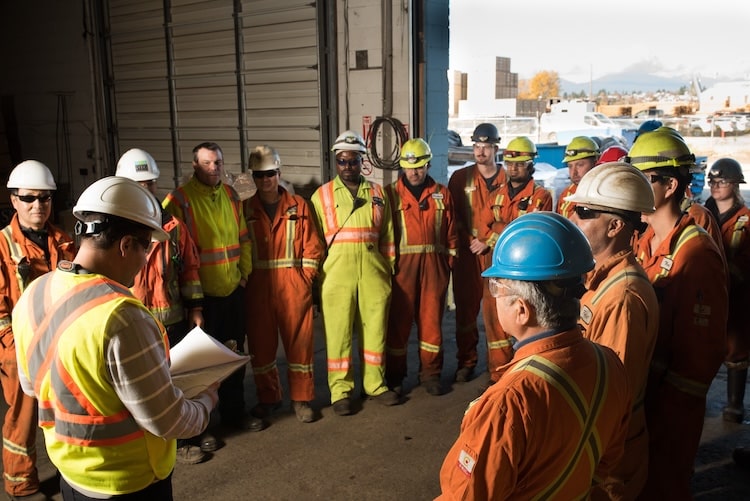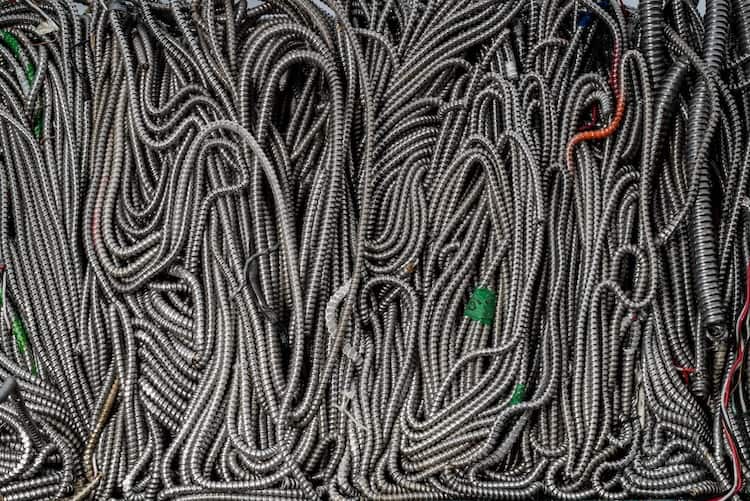There are plenty of reasons to demolish an industrial facility: age of the structure, new technologies, changes in industry location. But even though a building is at the end of its life, all of the scrap metal inside is ready to be used again. It just needs to be recovered, recycled, and reincarnated.
Almost all of the ferrous metals (iron) and non-ferrous metals (ex. copper, aluminum) can be salvaged from a demolition site—and it makes financial and environmental sense.
By recycling recovered metals, you can greatly reduce the cost of your project. Richmond Steel buys the scrap metal we recover from your site during our demolition service. The reason these scrap metals are so valuable is because metal recycling conserves 95% more energy than making new metal from ore deposits.
Since 1971, we’ve been demolishing, recovering, and recycling metals from commercial and industrial sites. This is our process.

The first step in any metal salvage project is to conduct a thorough survey of the building. This involves identifying all machinery, non-ferrous metals, and potential safety concerns. It's also crucial to remove any hazardous materials before starting the demolition.
We craft a demolition plan outlining the sequence of operations, the equipment needed, and safety measures to be taken (ensuring the safety of everyone involved and protecting the environment are always top priorities).
When multi-story building demolition, the floor-by-floor method is often used. This approach involves systematically cutting out non-structurally-essential metal components from each floor using shears or torches. It’s much more efficient to recover as much metal as possible before structural demolition, rather than sorting through debris afterwards.
Grading and Initial Separation
The next step in metal salvage is grading and initial separation. When a building is being demolished, various types of metals are sorted based on their characteristics and value. Siding, beams, and heavy steel components are identified and separated. This grading process is essential because it ensures that each type of metal is handled appropriately in subsequent stages.
Siding, usually a lighter grade metal, is shredded and baled; this compacts the metal, making it easier to transport and handle. These bales are then sent to recycling facilities where they are further processed.
Beams and heavier steel are cut down to mill dimensions, typically 5' by 2', using powerful shears or torches. This makes them easier to handle and process further.

Separating ferrous from non-ferrous metals is a crucial part of the recycling process. Non-ferrous metals, like copper and aluminum, are particularly valuable. They are often removed before the main demolition begins. (For example, cables are cut out and set aside to ensure they are not mixed with other materials.)
Magnetic separation is used to efficiently sort ferrous metals. Magnets attract the iron-containing metals, pulling them out from the mixed material stream. This step is vital for maintaining the purity of the different metal types and maximizing their recycling potential.
The heavy lifting in metal recycling involves specialized equipment. During a building demolition, electromagnets on cranes are used to handle large quantities of ferrous metals efficiently. Shears and high reach shears cut down large metal pieces to manageable sizes, making them easier to transport and process.
On-site balers and crushing machines compress metals into compact bales—this reduces the volume of the scrap metal, facilitating easier transport and handling. Torches are also used for precise cutting, especially for thicker or more complex metal structures.
Once the metals are sorted and prepared on-site, they are transported to our processing facilities for further refinement. These additional processes ensure maximum recovery and efficiency. Techniques used include:

Recycling scrap metal is not just good for the environment; it also makes economic sense. Companies can recover significant value from recycling both ferrous and non-ferrous metals, reducing the costs associated with building demolition by selling the recovered metals.
As mentioned earlier, recycling metals is also far more energy-efficient than mining and processing new metals. Our recycle rate (the material that completes the collection and recycling process, resulting in its eventual reuse) for steel beams and machinery is nearly 100%.
This means we’re highly effective in two key ways: First, we are able to collect nearly every beam and piece of machinery that can be recovered from a site—leaving almost no metal behind that could be recycled. Secondly, our recycling mill process recovers practically all the metal from those beams and machines so they can be reused again (negligible amounts are lost or disposed of during the recycling process).
With experience, the right techniques, and some heavy equipment, almost all the valuable scrap metal in your demolition can be recovered.
Richmond Steel has been servicing western Canada’s metal recycling and demolition needs for over 50 years, with locations in Edmonton, Prince George, Fort St. John, Kamloops and Richmond.
Let’s talk about your demolition and how the Richmond Steel approach can recover the most value from your industrial site.